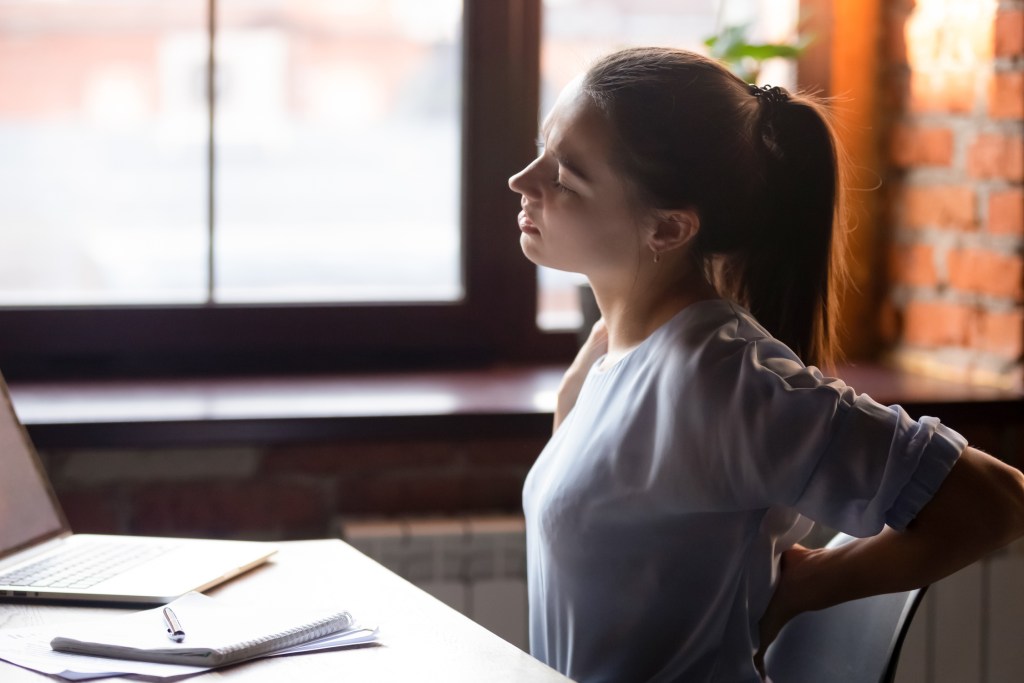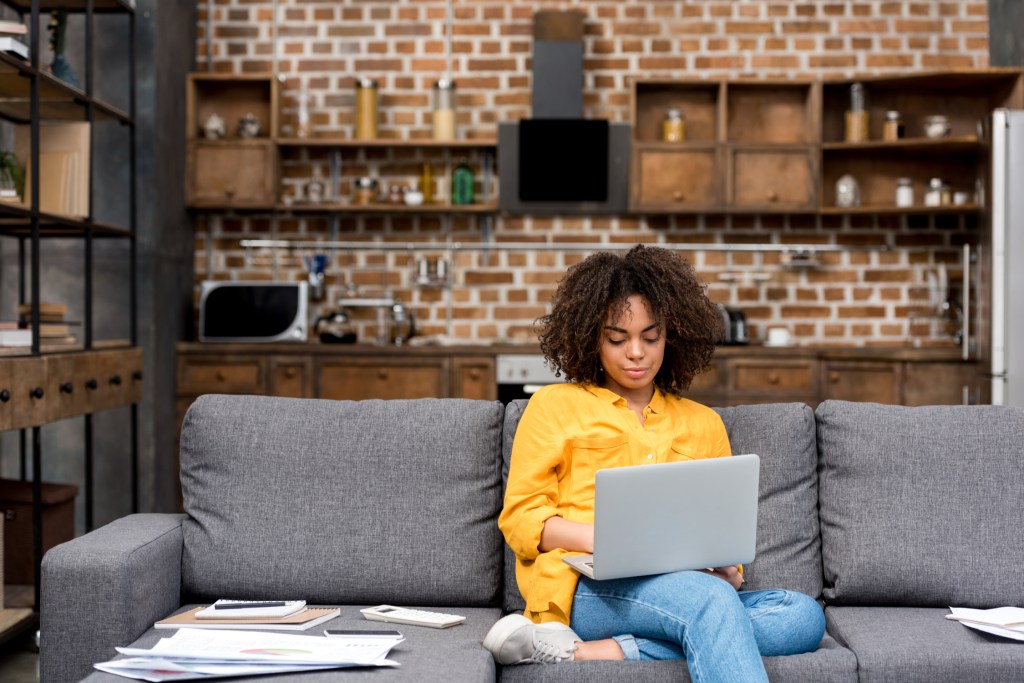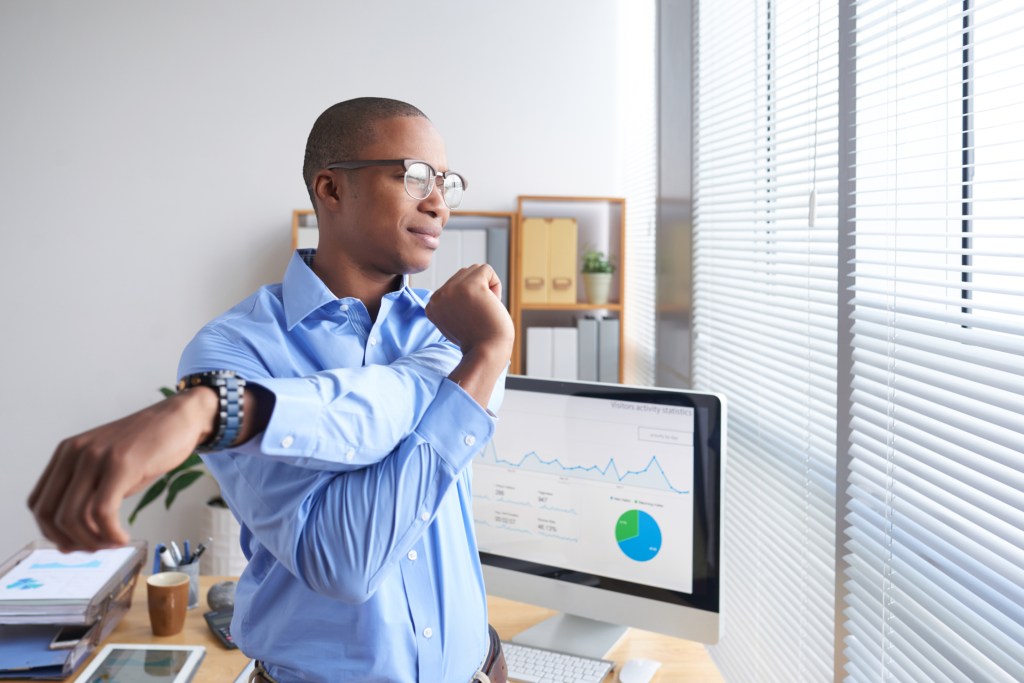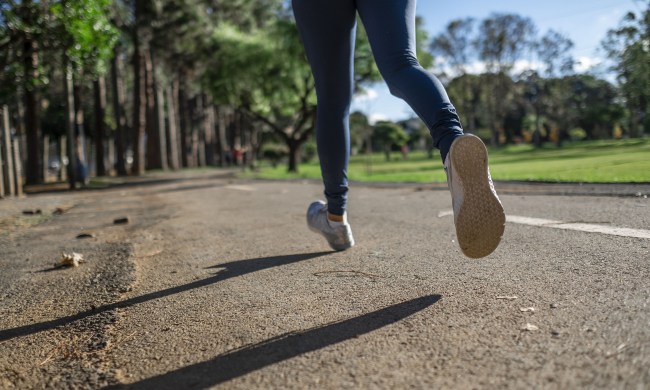For many of us working from home became the norm during the pandemic, opening up a whole new world of flexibility – yes, you can walk the dog and throw your laundry in during the workday – and freedom from commutes. On the flip side, WFH has also brought on a host of back, shoulder, neck, and other physical pains, something so prevalent, experts have dubbed it “pandemic posture.”
Pandemic posture doesn’t only affect the muscles and joints, but the entire body, and even our mental states. A 2020 survey from Lenovo found that 71% of respondents complained of new or worsening aches and pains since working remotely including back and neck pain, poor posture, headaches, increased eye strain, and even trouble sleeping.
Why WFH can lead to BIP (being in pain)
What’s leading to all the WFH aches and pains? Our home offices are a big part of the problem, according to Alan Hedge, PhD, professor emeritus at Cornell University, founder of Humanuse: Ergonomics Consulting, and the author of several books on ergonomics.
“Companies have spent the last 30 years improving the ergonomic design of the corporate workplace,” says Hedge. “A lot of people aren’t working the same way at home. It’s not the same setups.” For example, instead of working in a standard-sized cubicle with room for an ergonomic chair and desk, many of us are plugging away hunched over the kitchen counter or coffee table. “A lot of people are working on sofas, beds, and kitchen stools. Unless you have a dedicated home office, your home office doesn’t usually have the same space as your work office,” he adds.
Our at-home tech also typically doesn’t match up to what we had in the office, according to Hedge. “You may have gone from two computer screens to working on a teeny laptop on the kitchen table. That makes it more difficult to get into perfect posture,” says Hedge, adding that poor at-home lighting can also lead to eye strain and headaches.
Our home set-ups also often aren’t conducive to long workdays, according to Dr. Gbolahan Okubadejo, an orthopedic and spine surgeon who operates the Institute for Comprehensive Spine Care with locations in N.Y. and N.J., and has spoken extensively on pandemic posture. “Workplace workstations to a great extent have ergonomic desks and chairs that are set up for eight-hour days,” says Okubadejo. “It’s not the same at home. If you’re using the kitchen table as a desk, that’s not designed to sit at all day.”
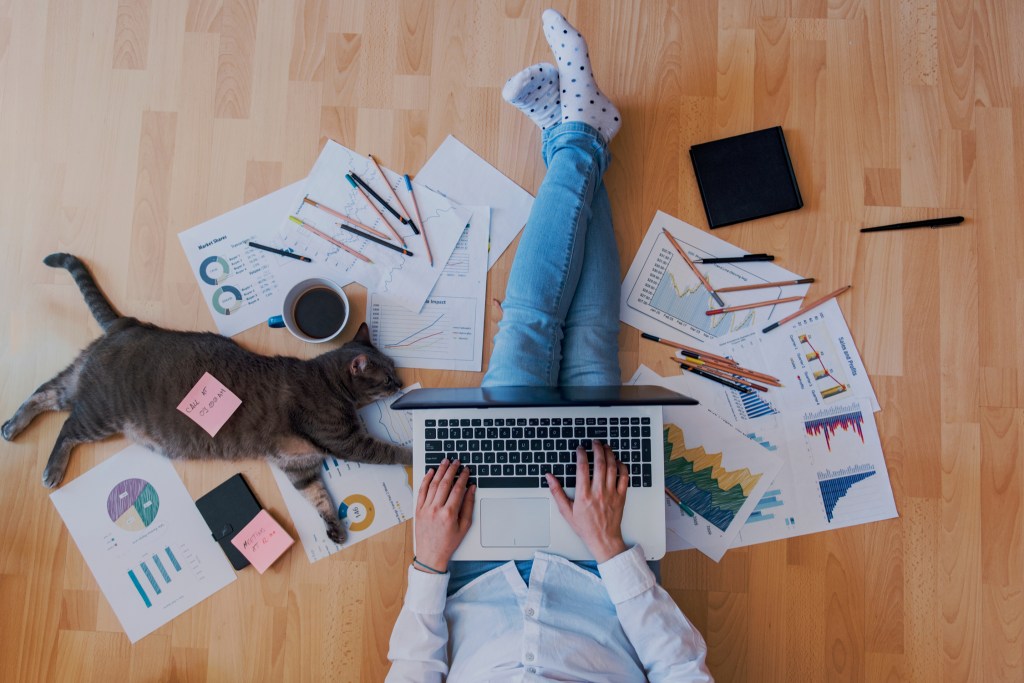
All those factors can be compounded by the fact that a lot of us are actually working longer days at home than we did at the office. New research shows that at-home working has led to a 2.5-hour increase in the average working day for WFH employees in the U.S., Canada, the U.K., and Austria. And, although you’d be hard-pressed to find someone who says they miss commuting, the lack of walking and physical movement that went with it also makes us more prone to pain and injury. “Instead of a normal commute, you might just be rolling from the bedroom to the kitchen, or just staying in the bedroom,” says Hedge.
Lack of commute can also mess with our pre-pandemic fitness routines, says Okubadejo. “You might have been going to the gym before or after work, and there’s no replacement for that now,” he says, adding that decreases in exercise lead to a decrease in physical fitness that can lead to being more likely to experience pain.
Signs you might have pandemic posture
The good thing — or bad, depending on how you look at it — is it’s easy to tell if you’re suffering from pandemic posture. If you’re WFH and experiencing pain, that’s a pretty good sign, according to Hedge. “Any discomfort is the start of a process that’ll end in injury if you keep doing it,” he says. “The good thing about injury is invariably it’s slow, progressive, and cumulative. You have lots of warning signs, and if you pay attention it never has to get to the point of injury.”
The warning signs can range from pain in your hands or wrists while using a keyboard or mouse, to “tech neck” from hunching over screens, to lower back pain from a bad chair — and, you might not even feel it while you’re working. “You might be typing all day, sit down in the evening to watch TV, and then your back aches. Or, you go to bed and your wrist aches after typing all day. You might even wake up with aching,” says Hedge.
Bad posture can also affect our energy levels, so if you’re feeling more fatigued than when you went to the office, you might want to take a look at your posture. “If you have a hunched posture, which is most commonly leaning forward with the head down, you have much less lung volume,” says Hedge. “The amount of oxygen you get with every breath is less, and less oxygen makes you drowsier.”
Even our mental state can be affected by poor posture, according to Okubadejo. “If you are in pain from bad posture, your self-perception goes down, and your mental health is affected, which can lead to depression,” he says.
How to assess yourself
Although you might try to ease the pain with splints, braces, or even ibuprofen, those are only temporary fixes. Instead of covering the pain, you should focus on fixing what caused it in the first place, according to Hedge. “These things don’t compensate for the fact that you are working using bad posture and it will eventually become an injury that will need intervention,” he says. “You need to listen to your body and figure out what you need to change.”
Common mistakes include not only slouching but sitting up too straight at your desk. “Your back is designed to have a little curvature, so you want a work chair or cushioning that promotes that,” says Okubadejo. He recommends a chair with adjustable height and wheels so you can easily move around.
Your posture should be relaxed, and your chair back should support your body weight, says Hedge. “There’s a reason people say, ‘sit back and relax,’ and not “sit up and relax,’” he says. “This reduces the amount of force on the spine.”
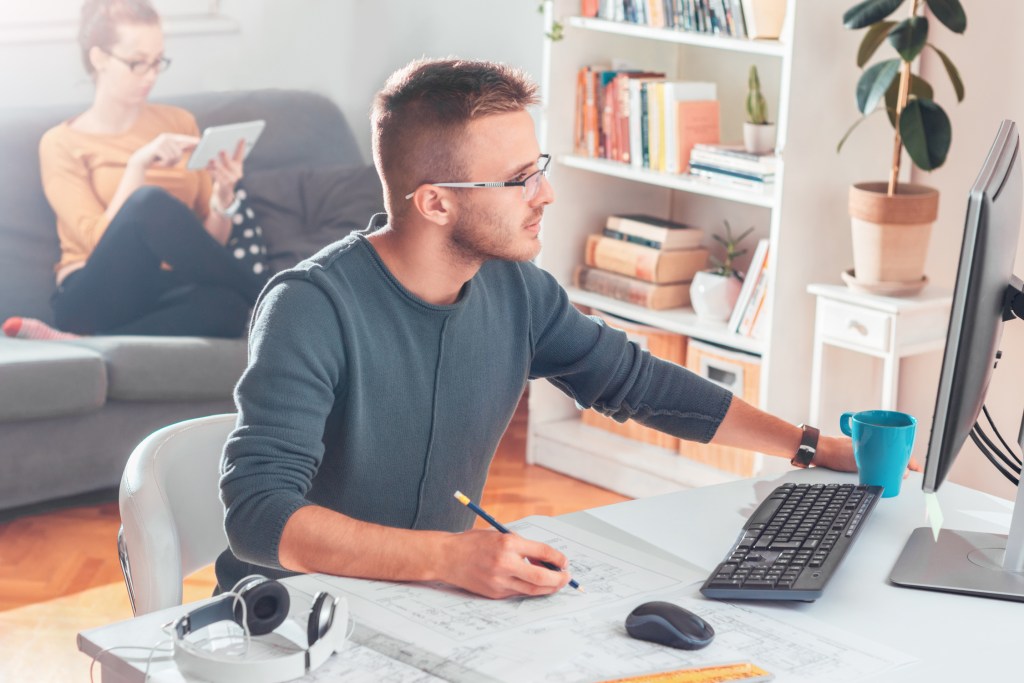
Your screen should be at eye level, which may mean putting it on a riser. Having it too low increases strain on the head and neck, which can lead to pain not only in those areas, but also in the shoulders, wrists, and hands. Your hands should be bent, not straight, because that can compress the nerves, says Hedge.
One method of self-assessment Hedge suggests is to have somebody take a photo of you while working so you can see what your work posture looks like. Hedge also created a free app called Home Office Ergonomics (available on iOS and Google Play) that helps you assess your home and work environments, and habits.
An ounce of prevention…
While fixing your posture is important, your best bet is to prevent injuries from happening in the first place. Some tips on how to do so include:
- Get up and move. This is one of the most important things you can do, according to Okubadejo. “Don’t sit more than two hours at a time. Set off a timer on your phone, and get up and stretch your back. This is one of the benefits of working at home that you don’t have at work,” he adds.
- Try the 20-8-2 schedule. A study Hedge co-authored found that a sit-stand-walk intervention is the most effective strategy to decrease the duration of sitting and promote light physical movement when doing short-duration computer work. The method: Follow 20 minutes of work while sitting with eight minutes of work while standing, then follow that with two minutes of self-paced walking and stretching. Standing work can be a good time to take phone calls or put your laptop in a place where you can stand and use it, says Hedge. Walking around for just two minutes increases blood flow to the brain which in turn increases alertness and creativity, he adds.
- Work on core strength and flexibility. These two things go hand in hand and are crucial not just to posture, but overall health, especially as we age, says Okubadejo. “It’s easier to maintain range of motion than obtain range of motion after it is lost. Your regimen can be as short as 10 minutes,” he says. Okubadejo suggests stretching out on a mat then doing two to three sets of 10 reps of leg raises, planks, and crunches. “You want to do isolated, targeted exercises for the core,” he says. “A stronger core is more protective of the spine, especially the lumbar spine.”
- Make “fitness deposits” towards retirement. Though you may feel you’re too busy, it’s important to make “deposits” of time for fitness, just like you do for your finances, says Okubadejo. Stretching and core-strengthening exercises only need to be done 10 minutes, three to four times per week to see the benefits. “Close your eyes and picture how you want to feel in retirement. You have to work towards that and make it a priority.”
BlissMark provides information regarding health, wellness, and beauty. The information within this article is not intended to be medical advice. Before starting any diet or exercise routine, consult your physician. If you don’t have a primary care physician, the United States Health & Human Services department has a free online tool that can help you locate a clinic in your area. We are not medical professionals, have not verified or vetted any programs, and in no way intend our content to be anything more than informative and inspiring.

